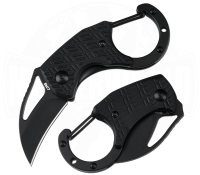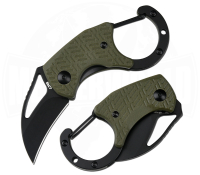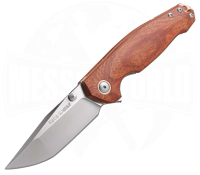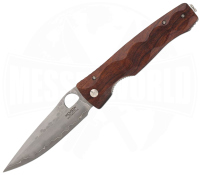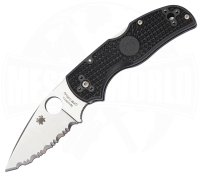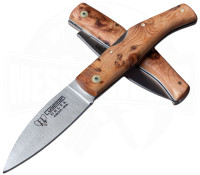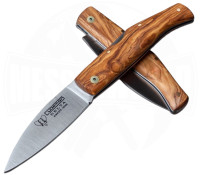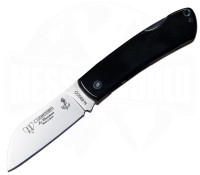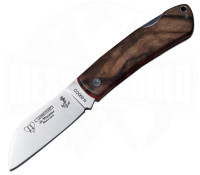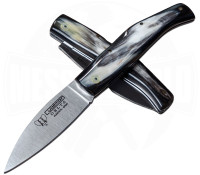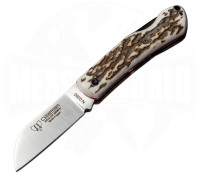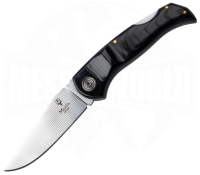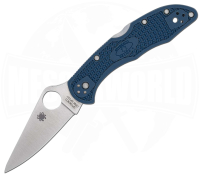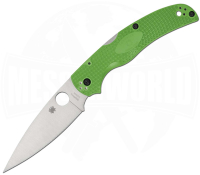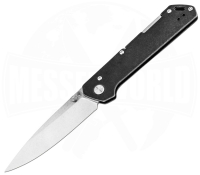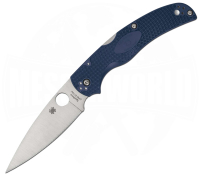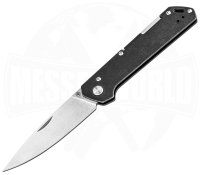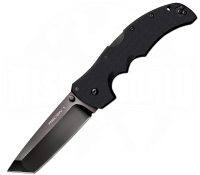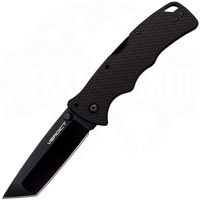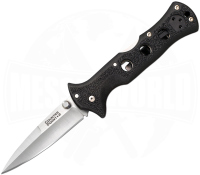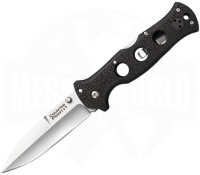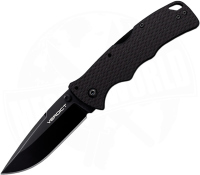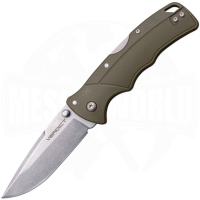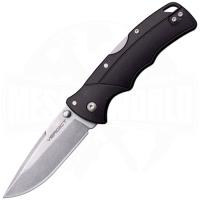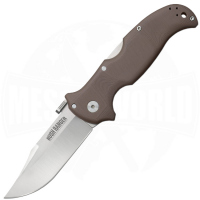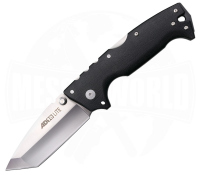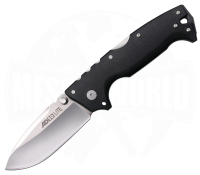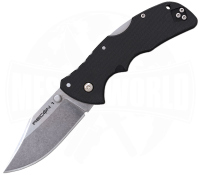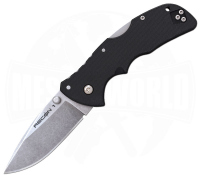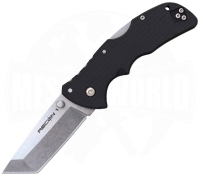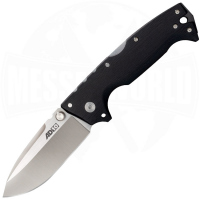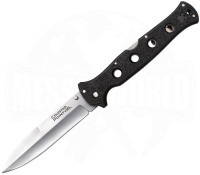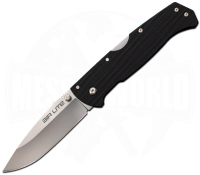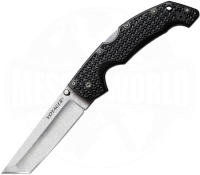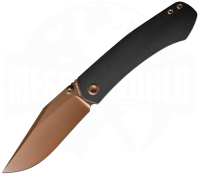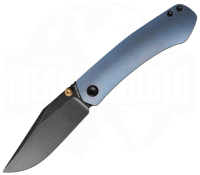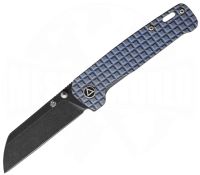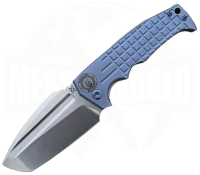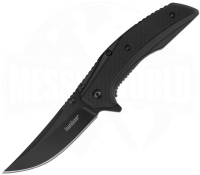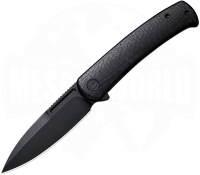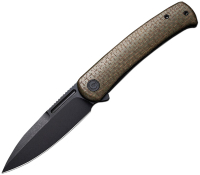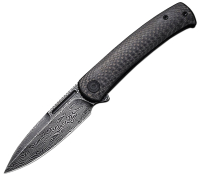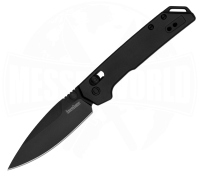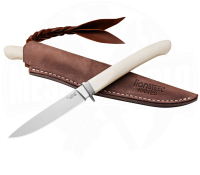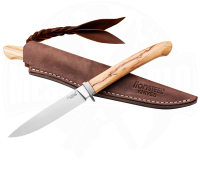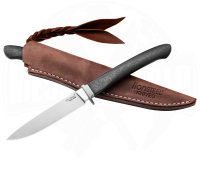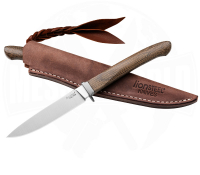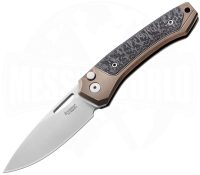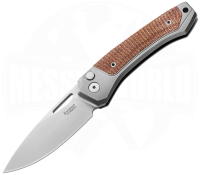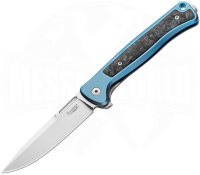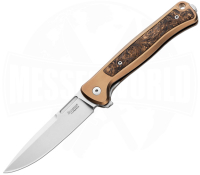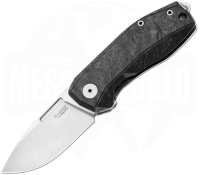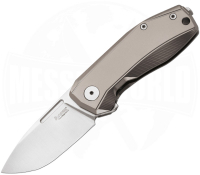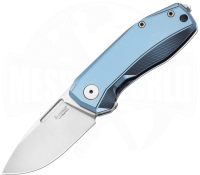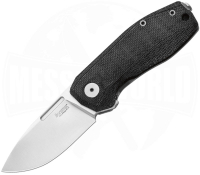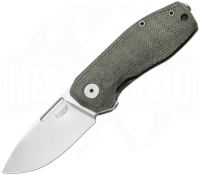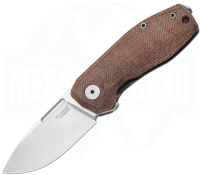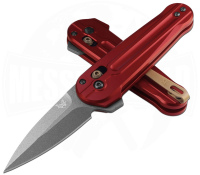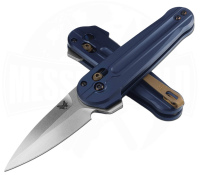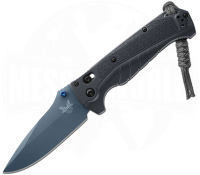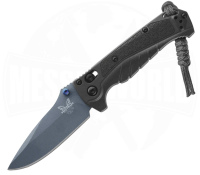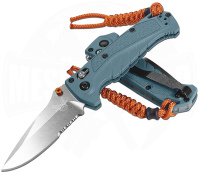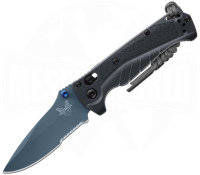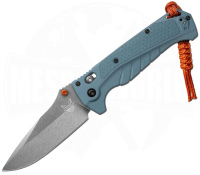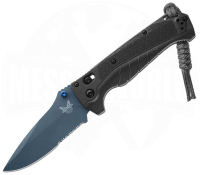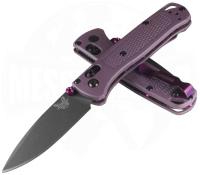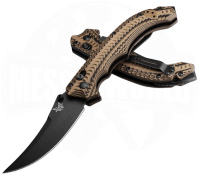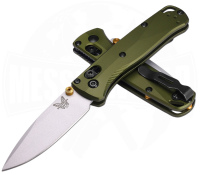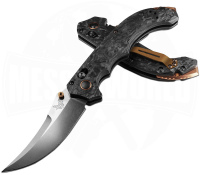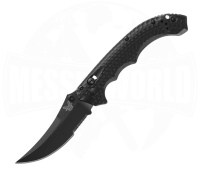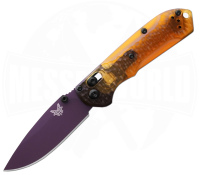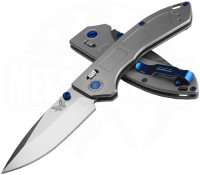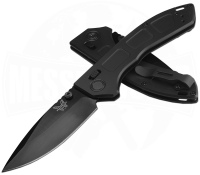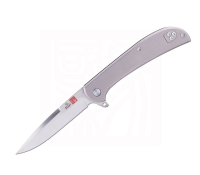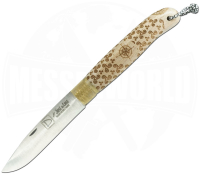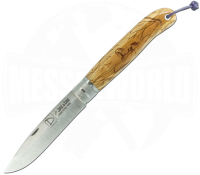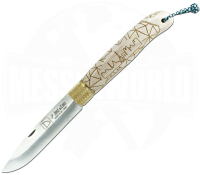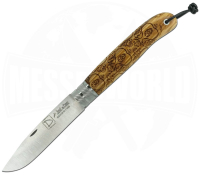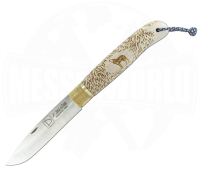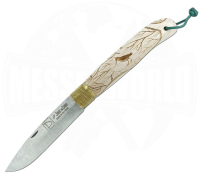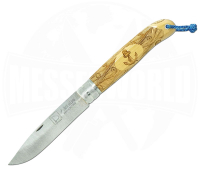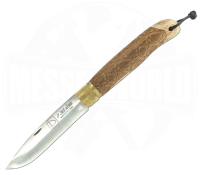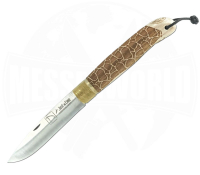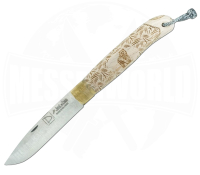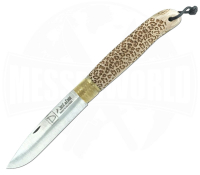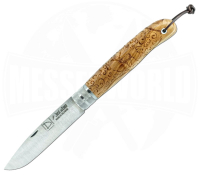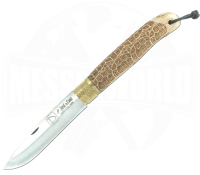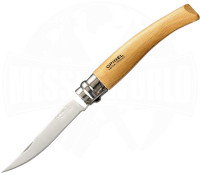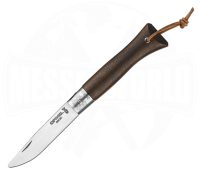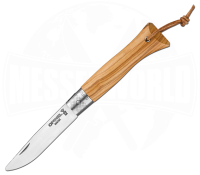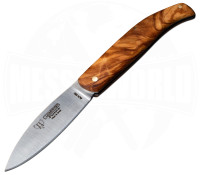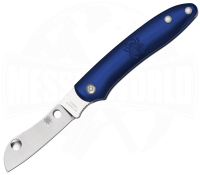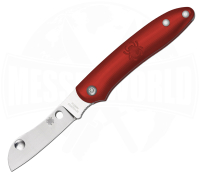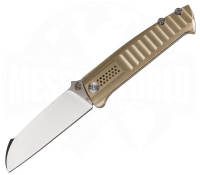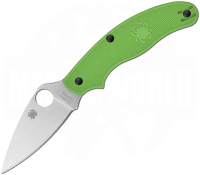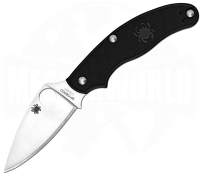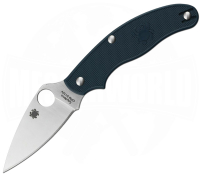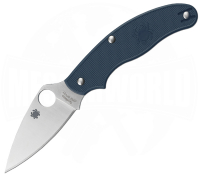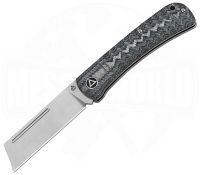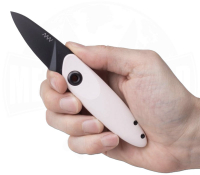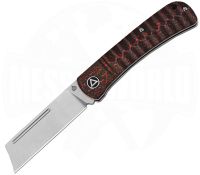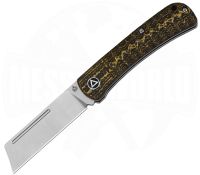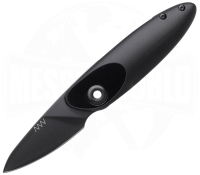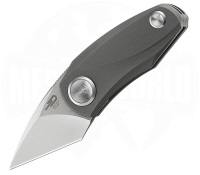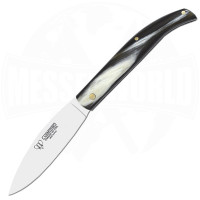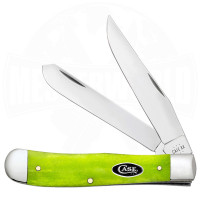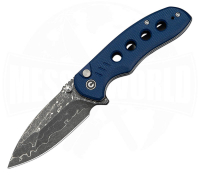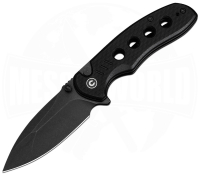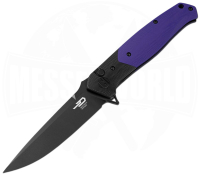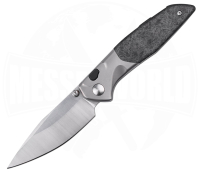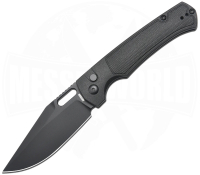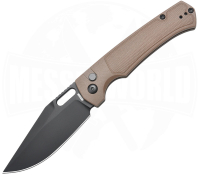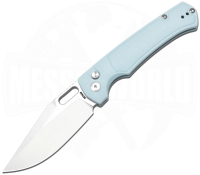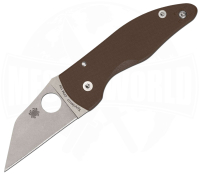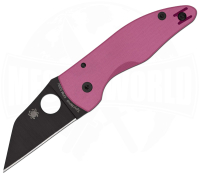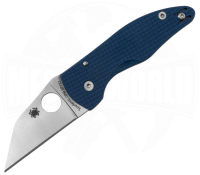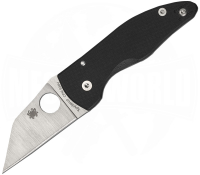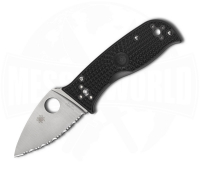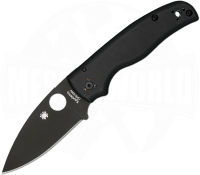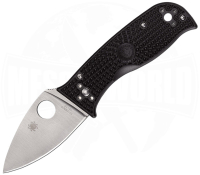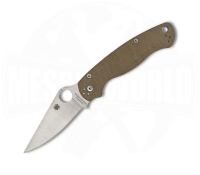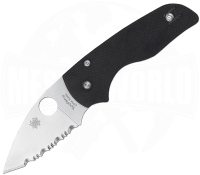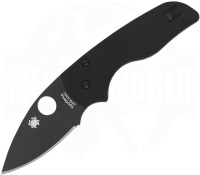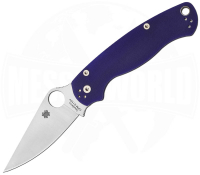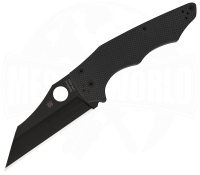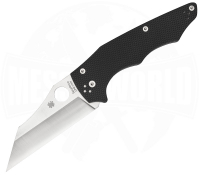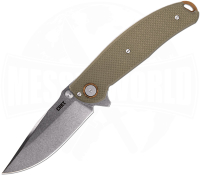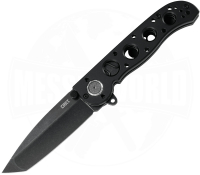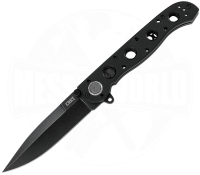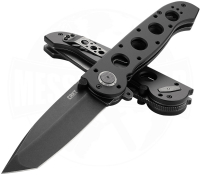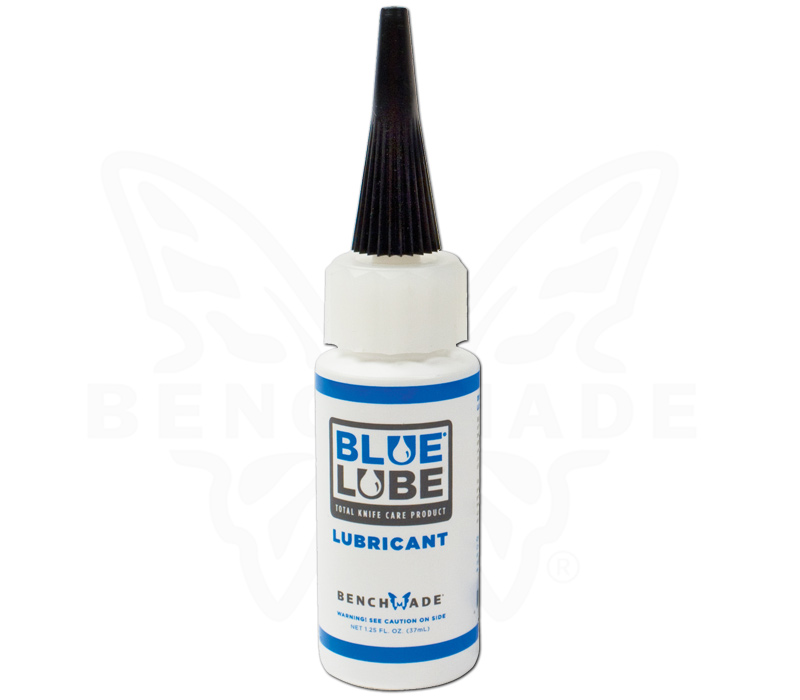Blade locks
Liner-Lock
The liner lock is one of the most widely used locking mechanisms. With this lock, a plate is mounted between the handle scales, which fixes or releases the blade. This plate is slightly curved inwards and raised in the front area to ensure operation from the outside. When the knife is closed, the folded blade presses the plate outwards against the handle. When the knife is opened, space is now freed for the inward-pressing sinker, which then engages below the root of the blade and locks the blade in place. To lock the knife, you push the sinker outwards with your thumb, releasing the blade and closing it with your index finger. Most knives with liner lock are designed for right-handers, and are generally considered very robust and safe.
Back-Lock
The back-lock (also called lockback) owes its name to the rocker lock at the back of the handle. With this locking system, a lever is attached between the plates in the back of the blade, which engages with its hammer-like end in a groove at the root of the blade and thus locking the blade. Unlocking is done by pressing the lever on the back of the handle. Depending on the position of the lever on the back of the handle, a distinction is made between a front, mid or back lock. However, the back-lock knives are the most popular because they are easy to unlock. The back-lock is a very stable and safe blade safety device that is quite common all over the world.
Back-Lock variants:
Tri-Ad-Lock
Cold Steel's patented Tri-Ad-Lock was developed by Andrew Demko. Similar to a back-lock, the blade is held here in the open state by a locking pin that engages in the upper part of the blade axis and is secured in the rear area by a leaf spring. To close the blade, one presses on the rear area of the locking pin between the handle scales. The locking pin receives counter-pressure from the rocker arm, which it dissipates into the handle shell, preventing the rocker arm and pivot from giving way. When the material begins to wear, the Tri-Ad® system ensures that the locking bolt wedges itself deeper and deeper into the recess between the locking pin and the groove at the blade pivot. As a result, the blade is still locked securely and reliably. Overall, the Tri-Ad lock is a safe, robust and reliable lock that can withstand almost any kind of extreme load and adjusts itself.
Power-Lock
The Power Lock from Spyderco is another variant of the lockback, originally designed to increase the closing force of knives with larger blades, such as the "Tatanka". It uses a typical lockback bar that is mounted in the centre of the handle and interacts with a counter-rotating cam that engages with the tang of the blade.
Frame-Lock
Broadly speaking, the frame lock is a scales lock that can be found on the upper part of the handle. It is a variation of the liner lock, whereby here a part of the handle shell serves as a side spring. In most cases, the left handle scales of these knives are cut in an L-shape. When the blade is opened, the cut part of the handle jumps behind the blade root and locks the blade. Knives with a frame lock are unlocked by pressing on the handle. The frame lock was named after its purpose, as the frame acts as a lock. All in all, this lock is a stable and secure locking mechanism that is easy to clean and seems indestructible due to the replaceable lock bar. Similar to liner locks, the operation of frame locks is mainly designed for right-handers.
Frame-Lock variants:
Subframe-Lock
The subframe lock, invented by KAI, the makers of Kershaw and Zero Tolerance knives, is basically a reverse liner lock where the frame itself is very thin and the liner underneath is thick. The lock is made via a cut-out in the frame itself.
Rotoblock
The Rotoblock, invented by LionSteel, combines a Hinderer-like locking bar follower stop with a secondary locking device. The round insert is rotated when the blade is open and physically blocks the locking bar from being pushed open until the Rotoblock is retracted.
Stop-Pin
In some newer designs, the thumb-pins are used as dual-function elements for both opening and fixing the blade. Grant & Gavin Hawk added a set of rubber seals to the stop-pin to cushion the impact of the blade when it opens.
Axis-Lock
The Axis-Lock is a bolt lock over the axis of the blade joint, which is where the name comes from. It is a locking system developed by the American knife manufacturer Benchmade. With the Axis lock, the unfolded blade is locked by a bolt that is positioned across the blade. This bolt engages by means of an Omega coil spring in a groove provided for this purpose at the root of the blade. If this transverse bolt is pulled backwards out of the groove, the blade is unlocked again. Due to the transverse pin, the blade can be unlocked on the right as well as on the left side and is therefore something for left and right-handed users. This locking system is extremely safe when open and closed and the design makes wear and tear very unlikely.
Axis-Lock variants:
Arc-Lock
Der Arc-Lock, entwickelt durch SOG, ist eine Abwandlung des Benchmade-patentierten Axis-Locks. Ein erdnussförmiger Metallblock ist an einem Drehpunkt befestigt, der parallel zum und hinter dem Anschlagstift verläuft. Die integrierten gebogenen Federn drücken den Block beim Öffnen oder Schließen des Blattes in einem Bogen (eng. "Arc") nach unten, wobei sie die Rückseite des Zapfens in eine verriegelte Position beim Öffnen und beim Schließen in eine Öffnungsspannung bringen. Es gilt als eines der besten verfügbaren Schlösser und ist beidhändig, sicher und einfach zu bedienen.
Ball-Bearing-Lock
The Ball-Bearing-Lock was created in 2002 by the Spyderco company. It is similar in construction to the Axis lock, but a little more bulky. As the name suggests, a hardened steel ball locks into a recess on the blade axis. The pressure on the ball is triggered by a spiral spring. The ball also serves as a lock to fix the blade in the closed position. In terms of stability and safety, this lock is in no way inferior to the Axis Lock. The thumb alone is not enough to lock the knife with the ball-bearing lock, so it has to be operated with both hands. The system is also designed for both left- and right-handers.
OCS-Lock (Open-Close-Security-System)
Visually very similar to the Axis lock from Benchmade, the OCS lock is designed in such a way that the blade of the knife can only be opened with both hands. This lock was designed by the Italian company LionSteel and is also built into various knives from other manufacturers, such as the Force Two models from Pohl Force. The open-close security system ensures that pocket knives equipped with it do not fall under WaffG §42a and can therefore be carried.
Virobloc
The Virobloc, also called Ringlock, is a locking device created by the French manufacturer Opinel. The ring lock consists of a fixed part and a sliding part. In addition to locking the knife in the open position for safe use, it is also possible to lock the knife in the closed position for worry-free transport. The stainless steel ring is rotated by the user around the pivot point when the blade is open, ensuring that the hinge of the blade is firmly locked by the ring. This locking system is operated with both hands. To prevent malfunctions, proper maintenance, preferably with a few drops of oil for the ring, is recommended.
Slipjoint
Der Slipjoint ist theoretisch gar keine richtige Arretierung, da alle Taschenmesser mit Slipjointsystem "nicht-feststehende Messer" sind. Hier wird die Klinge von einer Feder offen gehalten, zum Schließen muss lediglich der Widerstand der Feder überwunden werden und kann sich deswegen leider auch beim Gebrauch schließen. Eine mechanische Verriegelung existiert nicht. Diese Verschlussart ist bei Einhandmessern bisher eher die Ausnahme und wird vorwiegend für Märkte in Ländern entwickelt, in denen Einhandmesser mit verriegelbarer Klinge einem Führverbot unterliegen. Besonders bei Schweizer Taschenmessern sowie Taschenmessern von Spyderco UK wird dieses System oft eingesetzt.
Button-Lock
Button-Locks lassen sich traditionell bei Automatikmessern finden, da der Druck auf den Knopf die übliche Art ist, um diese zu betätigen. Durch das Drücken der Taste gibt die Spiralfederspannung die Klinge frei. Wenn die Klinge vollständig geöffnet ist, greift der Kolben (das runde Innenteil der Knopfverriegelung) in einen Ausschnitt im Zapfen des Messers und hält ihn offen. Bei einem automatischen Messer verriegelt der Button-Lock die Klinge sowohl offen als auch geschlossen. Das Messer kann nur versehentlich geöffnet werden wenn der Knopf gedrückt wird, weswegen eine Verwahrung in einem Etui oder einer Pocket empfohlen ist. Das Messer ist jedoch meistens mit einer Schieberverriegelung gesichert, um den risikofreien Transport zu gewährleisten.
Compression-Lock
Der Compression-Lock, entwickelt von Spyderco, kann als ein verbesserter, umgekehrter Liner-Lock betrachtet werden, weil der Lock im Rücken des Messergriffs statt an der Unterseite angebracht ist. Wenn die Klinge geöffnet wird, springt der Lock seitlich und klemmt sich zwischen Klingenangel und dem Stop-Pin fest. Zum Lösen des Locks drückt man den Liner Richtung Griff und benutzt die zweite Hand zum Schließen des Messers. Im Gegensatz zum Liner-Lock werden hier beide Hände benötigt. Der Compression-Lock ist, bedingt durch seine Bauart, eine sehr sichere und starke Verriegelung. Er fixiert die Klinge im geöffneten als auch im geschlossenen Zustand perfekt und ist leicht zu bedienen.
Deadbolt-Lock
Meistens ist es so, dass die Stärke der Arretierung von der Breite des Messers abhängt. Nicht so beim Deadbolt-Verschluss, entwickelt von Flavio Ikoma. Zu finden ist dieser in den CRKT Seismic-Modellen. Der Deadbolt ist nicht nur einer der stärksten Mechanismen auf dem Markt, sondern auch äußerst einfach und sicher zu bedienen, da die Finger nie den Drehweg der Klinge kreuzen. Zusätzlich ist der Verschluss leicht zu warten, zuverlässig und ermöglicht durch seine Bauart eine Menge von Anwendungsmöglichkeiten. Beim Deadbolt greifen Stahlbolzen ineinander wenn es eingesetzt wird, um eine ungeheure Kraft zu entfalten. Am Drehpunkt befindet sich eine markante Taste für ein einfaches, intuitives Auskuppeln, ohne dass die Finger im Weg sind.
Lever-Lock
Der Lever-Lock ist im wesentlichsten eine Zahn-Verriegelung mit einem Ring zum Entriegeln der Klinge, welche sich am Vorderende des Griffs befindet. Die ausgeklappte Klinge wird durch Zähne am Klingengelenk verriegelt. Beim Öffnen der Klinge rutschen diese in einen Schlitz der Rückenfeder. Die Zahn-Verriegelung wird entriegelt indem die Rückenfeder entweder durch Zug an einem Ring oder durch Drücken eines Hebels angehoben wird, so dass das Klingengelenk wieder frei drehbar ist. Der Name Lever Lock lässt sich übrigens aus dem englischen Wort für Hebel (wegen der hebelartigen Funktion der Rückenfeder) ableiten.
Balisong
Bei einem Balisong (Butterflymesser) dient ein zweigeteilter, schwenkbarer Griff als Verschluß. Ein an einem Griffende befestigter T-förmiger Bügel verriegelt in einer Aussparung der zweiten Griffhälfte die beiden Griffstücke miteinander und arretiert diese somit. Balisongs sind in Deutschland verboten.
Pflege dein Messer
Genau wie auch sämtliche anderen Teile des Messers sollte auch das Arretierungssystem immer frei von Fremdstoffen gehalten werden und nach intensivem Gebrauch gereinigt werden. Der Klingengang kann mit ein paar Tropfen Pflegeöl immer in einem perfektem Zustand gehalten werden. Wir empfehlen ihnen hierfür das Lubricant-Pflegeöl aus unserem Shop ;).



